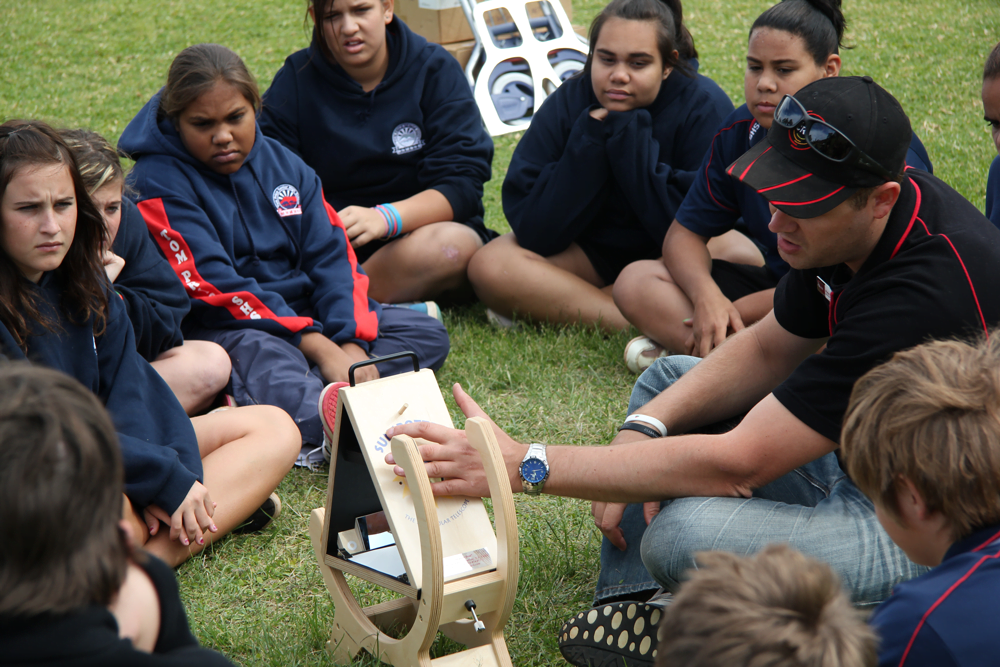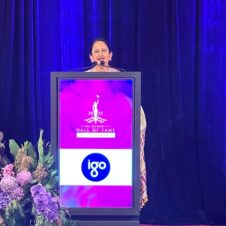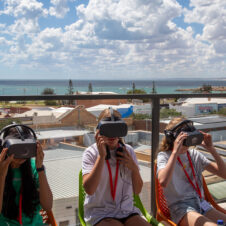
Students in the Pilbara investigating sunspots under the guidance of ICRAR’s Pete Wheeler during an earlier Aspire to Astronomy Tour in 2011.
As part of The University of Western Australia’s Centenary celebrations, staff from the International Centre for Radio Astronomy Research (ICRAR), Aspire UWA, SPICE and Scitech are joining forces with Midwest schools to reach for the stars.
“In the 100 years since our University opened its doors, we’ve contributed significantly to the intellectual, cultural and economic development of the State and the nation,” said UWA Vice-Chancellor Professor Paul Johnson.
“The astronomy roadshow is a way for UWA to thank the West Australian community. This initiative – and others like it – are a way for the University to ‘give back’ in return for the 100 years of community support the University has enjoyed.”
The astronomy team will visit Carnamah, Morawa, Meekatharra, Mount Magnet, Pia Wadjarri, Kalbarri and Jurien Bay. School students will be able to find out about space and use solar and radio telescopes. Teachers will take part in astronomically themed professional development through SPICE, an enrichment program for educators.
Staff from Aspire UWA and the University’s School of Indigenous Studies will work with high school students to highlight the opportunities presented by a university education and pathways that help students from regional WA attend university.
“This is a great opportunity for us to work with schools and communities and encourage local people to take a fresh look at their own night sky,” said Pete Wheeler, ICRAR’s Manager of Outreach.
“The biggest event of the trip will be Astrofest in Mount Magnet, featuring an astrophotography exhibition, inflatable planetarium, talks, night sky tours, glow-in-the-dark water rockets and, of course, loads of telescopes.”
The Midwest is becoming a global hub of astronomy and related research, with several new radio telescopes coming online in the Murchison and the announcement early last year that part of the Square Kilometre Array (SKA), the world’s biggest telescope, will be built in the region.
The SKA, due for completion in 2025, will use a network of millions of antennas to gather radio signals from the oldest and most distant objects in the Universe. It will allow scientists to better understand how stars and galaxies formed billions of years ago and may even reveal signs of other life in the Universe.
More details of the Aspire to Astronomy Tour.
Media Reference:
Kirsten Gottschalk (ICRAR Media Contact) (+61 8) 6488 7771 / (+61 4) 38 361 876
Michael Sinclair-Jones (UWA Public Affairs) (+61 8) 6488 3229 / (+61 4) 00 700 783

